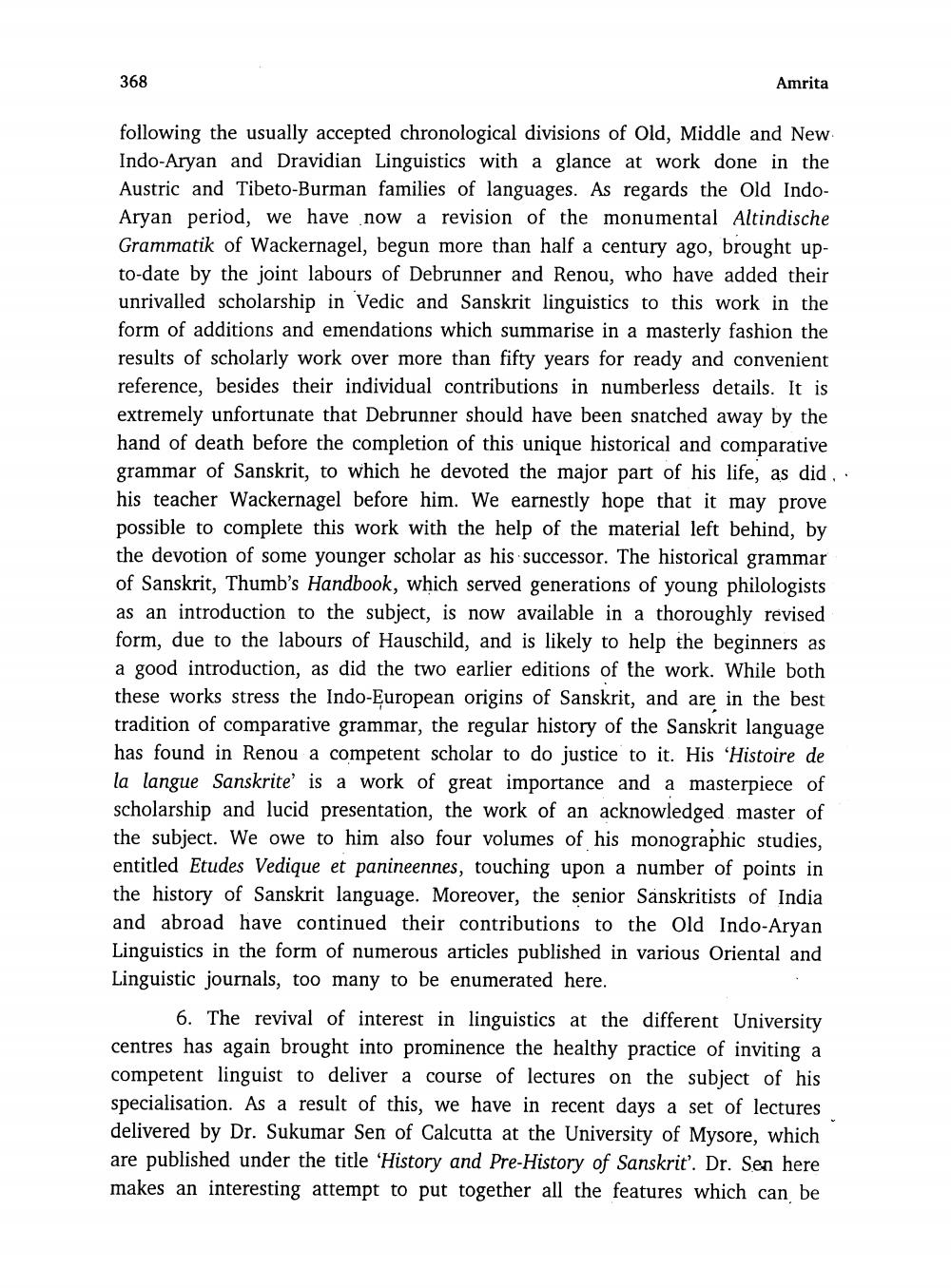________________
368
Amrita
following the usually accepted chronological divisions of Old, Middle and New Indo-Aryan and Dravidian Linguistics with a glance at work done in the Austric and Tibeto-Burman families of languages. As regards the Old IndoAryan period, we have now a revision of the monumental Altindische Grammatik of Wackernagel, begun more than half a century ago, brought upto-date by the joint labours of Debrunner and Renou, who have added their unrivalled scholarship in Vedic and Sanskrit linguistics to this work in the form of additions and emendations which summarise in a masterly fashion the results of scholarly work over more than fifty years for ready and convenient reference, besides their individual contributions in numberless details. It is extremely unfortunate that Debrunner should have been snatched away by the hand of death before the completion of this unique historical and comparative grammar of Sanskrit, to which he devoted the major part of his life, as did , his teacher Wackernagel before him. We earnestly hope that it may prove possible to complete this work with the help of the material left behind, by the devotion of some younger scholar as his successor. The historical grammar of Sanskrit, Thumb's Handbook, which served generations of young philologists as an introduction to the subject, is now available in a thoroughly revised form, due to the labours of Hauschild, and is likely to help the beginners as a good introduction, as did the two earlier editions of the work. While both these works stress the Indo-European origins of Sanskrit, and are in the best tradition of comparative grammar, the regular history of the Sanskrit language has found in Renou a competent scholar to do justice to it. His 'Histoire de la langue Sanskrite is a work of great importance and a masterpiece of scholarship and lucid presentation, the work of an acknowledged master of the subject. We owe to him also four volumes of his monographic studies, entitled Etudes Vedique et panineennes, touching upon a number of points in the history of Sanskrit language. Moreover, the senior Sanskritists of India and abroad have continued their contributions to the Old Indo-Aryan Linguistics in the form of numerous articles published in various Oriental and Linguistic journals, too many to be enumerated here.
6. The revival of interest in linguistics at the different University centres has again brought into prominence the healthy practice of inviting a competent linguist to deliver a course of lectures on the subject of his specialisation. As a result of this, we have in recent days a set of lectures delivered by Dr. Sukumar Sen of Calcutta at the University of Mysore, which are published under the title 'History and Pre-History of Sanskrit'. Dr. Sen here makes an interesting attempt to put together all the features which can be




